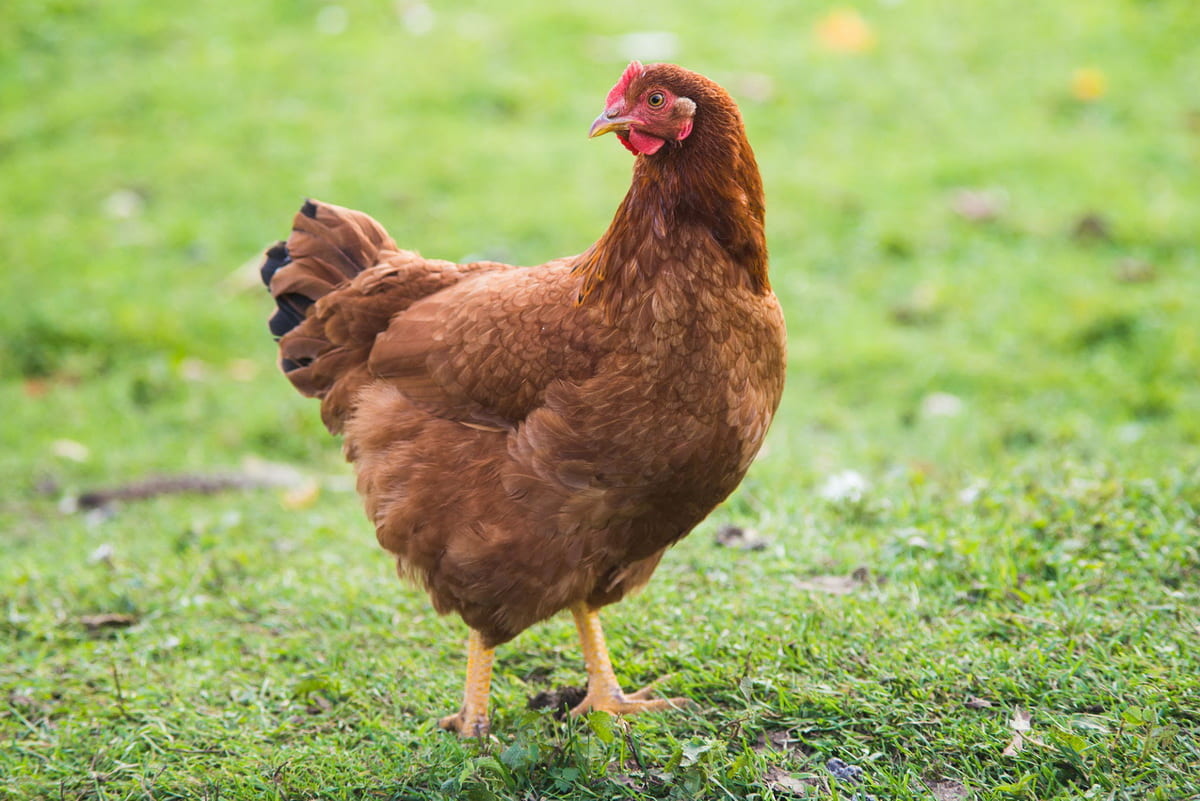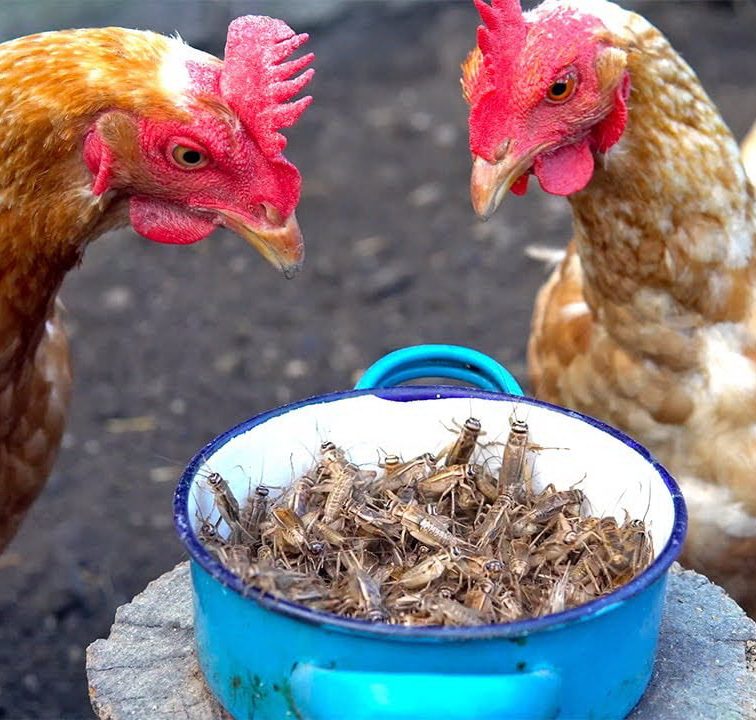Embark on a journey into the world of one of the most iconic breeds in poultry history—the Rhode Island Red chicken. From their humble beginnings in New England to becoming the state bird of Rhode Island, these chickens have not only captured the hearts of farmers but also played a pivotal role in shaping poultry standards worldwide. With their vibrant red plumage, remarkable resilience to cold, and unparalleled egg-laying capabilities, Rhode Island Reds stand out as a breed of many talents. But there’s more to these chickens than meets the eye.
Discover intriguing aspects of their personality, their dual-purpose utility, and how they’ve become a symbol of American heritage. Dive into Rhode Island Red chicken facts and uncover the layers of history, utility, and character that make this breed truly fascinating.
1. State Bird Pride: The Rhode Island Red
In a unique blend of agricultural heritage and state pride, the Rhode Island Red chicken not only represents an icon of poultry breeding but also holds the esteemed title of the official state bird of Rhode Island. This designation, made in 1954, underscores the deep connection between the state’s identity and this robust, versatile breed.
Chosen through an election spearheaded by the Audubon Society of Rhode Island, the Rhode Island Federation of Garden Clubs, and the Providence Journal Company, the Rhode Island Red triumphed over other contenders, such as the osprey and ruby-throated hummingbird, to claim its official status. This selection highlighted not just the breed’s economic importance but also its symbolic representation of Rhode Island’s character and achievements.
2. Egg-Laying Powerhouses
The Rhode Island Red chicken, a breed known for its robust egg-laying capabilities, has a significant history of selective breeding, especially post-World War II, to enhance its productivity. This effort led to the development of strains capable of laying around 300 eggs per year, positioning them as top-tier egg producers in the poultry world.
Following the end of World War II, a clear division emerged among breeders focusing on the Rhode Island Red chicken. Some aimed to advance the breed for the booming commercial egg-laying industry, while traditionalists sought to preserve the heritage strain. This dichotomy led to the evolution of “industrial” types, known for their exceptional laying performance, often starting around 18-20 weeks of age and capable of producing a staggering 150-300 eggs annually. Most hens from this lineage lay 5-6 medium to large, light brown eggs weekly, showcasing their efficiency as egg layers.
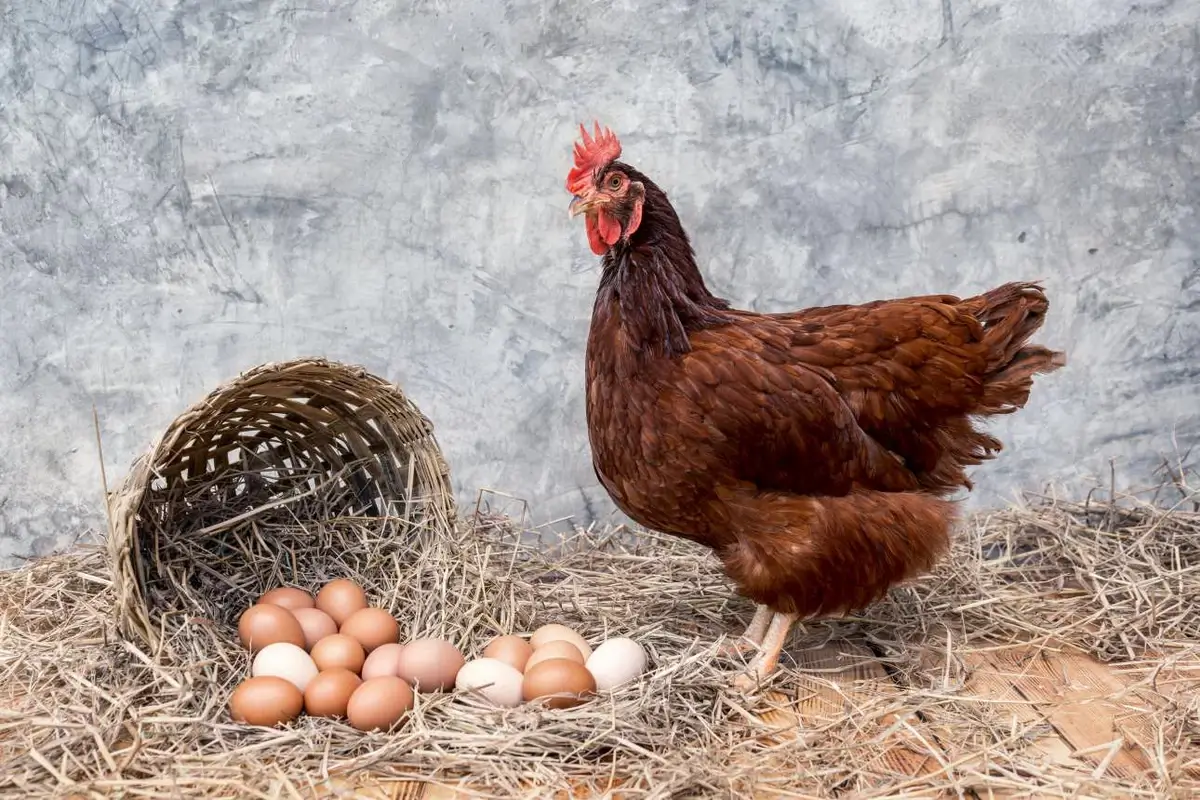
Image: protagon.gr
3. Breed Evolution: The Heritage of Rhode Island Reds
The Rhode Island Red chicken’s development is a testament to the ingenuity of 19th-century poultry breeding. Originating from a blend of Oriental and European birds, including the Malay and the Italian Leghorn, this breed was crafted in Rhode Island and Massachusetts for its dual-purpose qualities. The Malay’s influence is particularly noted in the breed’s distinctive deep red feathers. Over time, while industrial strains have been fine-tuned for egg production, heritage varieties maintain the breed’s original dual-purpose appeal, offering both substantial meat and prolific egg-laying capabilities.
Rhode Island Reds stand out for their robustness, friendly temperament, and foraging efficiency, making them a popular choice for both commercial and backyard poultry enthusiasts. They are celebrated for their capacity to lay 200-300 brown eggs annually, combining productivity with resilience.
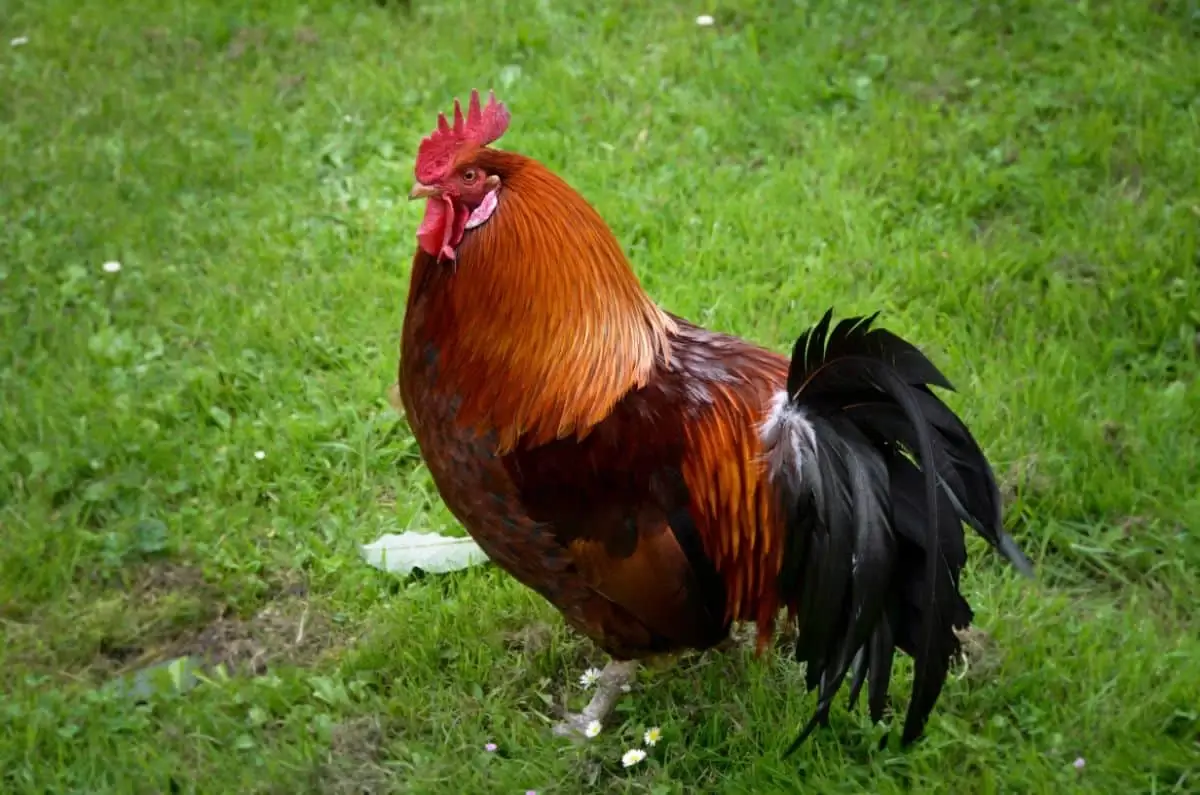
Image: chickenandchicksinfo.com
4. Cold-Hardy Characters: The Resilient Rhode Island Reds
Rhode Island Red chickens are renowned for their remarkable cold tolerance, capable of withstanding temperatures well below freezing. Originating from the rugged New England climate, these robust birds were bred for resilience, combining traits from several cold-hardy breeds such as the Cochin and Leghorn to thrive in chilly conditions. Their physical adaptations, including tight feathers and ample down, equip them well for the cold, allowing them to easily handle temperatures as low as zero degrees Fahrenheit. However, they do require some care to prevent frostbite on their combs and wattles, especially in sub-zero conditions.
Understanding and accommodating their needs during colder months is crucial for their well-being. While these chickens naturally adjust to dropping temperatures by molting into a warmer winter coat, sudden cold snaps can still pose a challenge. Though Rhode Island Reds are generally less prone to frostbite thanks to their small, compact combs, it’s essential to keep a vigilant eye during particularly cold, wet weather.
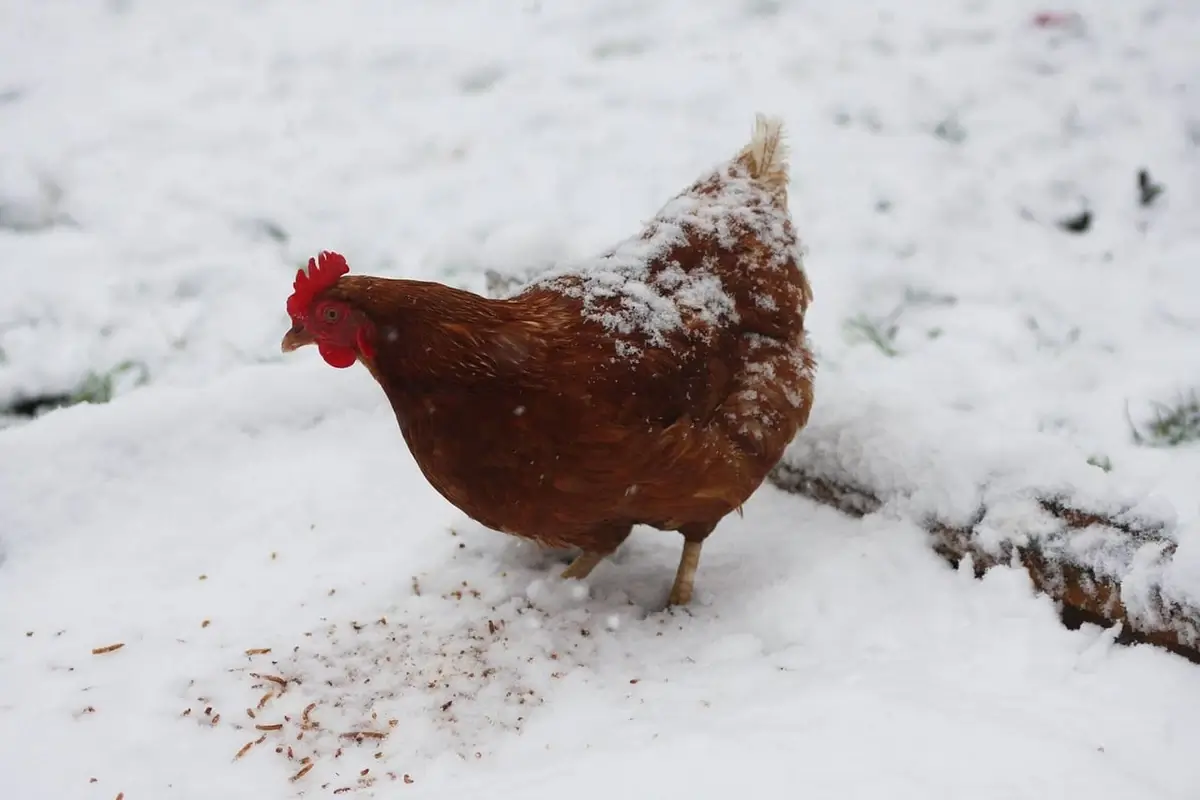
Image: knowyourchickens.com
5. Predator Savvy: The Alertness of Rhode Island Reds
Rhode Island Red chickens are renowned for their hardiness and adaptability, traits that extend to their ability to survive in various environments, including those where predators are a concern. These birds exhibit a keen awareness of their surroundings, which is crucial for free-ranging operations where the risk of predator attacks is higher. Their flightiness and alert demeanor serve as natural defenses, allowing them to quickly respond to potential threats.
When comparing Rhode Island Reds to other breeds like the Red Star, it becomes apparent that their foraging instincts and prey drive make them vigilant and capable of sounding alarms when predators approach. This attribute is particularly beneficial in larger free-range setups where chickens have ample space to utilize their hierarchical social structures for protection and survival. However, it’s noted that Rhode Island Reds’ all-red plumage can make them more visible in open areas, potentially increasing their vulnerability to aerial predators compared to breeds with more camouflaged feathering.
Despite these considerations, Rhode Island Reds stand out for their robust nature. They have a reputation for being at the top of the pecking order in mixed flocks, indicating their assertiveness, which could also translate into effective predator deterrence. This breed’s proclivity towards being alert and possibly aggressive makes them formidable against smaller ground predators, though care should always be taken to provide adequate shelter and protection strategies to safeguard any chicken flock.
6. Remarkable Lifespan: The Resilience of Rhode Island Reds
Rhode Island Red chickens are celebrated not just for their egg-laying prowess or vibrant plumage but also for their impressive longevity. These robust birds, originally bred from a mix of Leghorn chickens and Asian breeds like the Malay, have a life expectancy that sets them apart from many other breeds. On average, Rhode Island Reds can live between 5 to 8 years, with proper care extending their lifespan to 10 years or more, making them one of the longest-living chicken breeds.
The key to their remarkable lifespan lies in a combination of genetics, diet, and environment. Factors such as spacious living conditions, a balanced diet, and protection from predators significantly influence their longevity. For instance, providing Rhode Island Reds with enough space to roam and forage can enhance their well-being, thereby potentially prolonging their life.
Diet also plays a crucial role in the health and lifespan of these chickens. A well-balanced diet rich in proteins, vitamins, and minerals, coupled with clean, fresh water, ensures they maintain a healthy weight and robust immune system. Additionally, safeguarding them from predators and providing a secure coop for shelter are essential practices that contribute to their long life.
Moreover, Rhode Island Reds are known for their hardiness against common chicken diseases, thanks in part to their strong genetic foundation and the attentive care they receive from their owners. Regular veterinary check-ups and vaccinations can help detect and treat any health issues early, further increasing their chances of a longer life.

Image: mavink.com
7. Egg Color Indicator: The Secret Behind Chicken Earlobes
Rhode Island Red chickens, known for their red earlobes, typically lay brown eggs. This breed serves as a classic example where the general rule about earlobe color indicating egg color holds true.
However, it’s important to remember that while this correlation exists, it’s not absolute across all chicken breeds. Exceptions do occur, and the genetic relationship between earlobe color and egg color is complex, especially in ornamental and mixed breeds.
8. Vocal Personalities
Rhode Island Red chickens are not the quiet residents of the coop many might expect. Known for their vocal nature, these birds often express themselves loudly, which can be a consideration for those with nearby neighbors. This characteristic is somewhat underreported in breed profiles but is commonly noted by farmers and backyard chicken enthusiasts alike. The Rhode Island Reds’ vocalizations are part of their active and curious behavior, making them engaging, though sometimes noisy, companions.
These chickens are not just about noise; their active foraging habits and curious nature make them quite the explorers of the backyard. They are always on the lookout for bugs, seeds, and other tasty treats, showcasing their spirited and free-spirited demeanor. While hens are generally more docile, roosters can be more lively and, at times, aggressively protective, especially towards chicks.
9. Adaptable Feeders: Rhode Island Reds’ Diet
Rhode Island Reds are known for their hardiness and adaptability, thriving on a diverse diet that supports their robust health and productivity. These chickens excel with a diet comprising both grains and greens, indicating their preference for a varied menu. Grains like cracked corn, oats, wheat, and barley provide essential carbohydrates and energy, while greens and other vegetables offer vital nutrients and variety, enriching their overall diet.
Protein sources are critical for their growth and egg production, with feed typically including soybean meal. Supplementing their diet with insects or cooked meat scraps can boost protein intake, essential for their development. Treats such as crack corn, sunflower seeds, and mealworms are excellent for occasional rewards, though they should be given sparingly to avoid nutritional imbalance.
Water, crucial for digestion, nutrient absorption, and overall health, should be provided fresh and clean daily. Innovative watering solutions, like nipple waterers, and the addition of health-boosting additives such as apple cider vinegar and electrolytes to the water supply, can enhance their gut health and provide essential minerals.
10. Friendly and Docile: Rhode Island Reds for Families
Rhode Island Red chickens are celebrated for their friendly and easygoing nature, making them an excellent choice for families, especially those with young children. These birds are known for their sociability and calm temperament, often seeking human interaction and displaying a level of sociability that can make them delightful pets.
They’re not only great egg layers but also possess a demeanor that allows them to integrate well into family life, being easy to handle and even enjoying being picked up or petted.
FAQ
What are the pros and cons of the Rhode Island Red chicken?
Pros:
- Egg Production: Rhode Island Reds are known for their excellent egg-laying abilities, producing up to 300 eggs per year.
- Hardiness: They are robust and can thrive in various climates, being especially hardy in cold weather.
- Temperament: Generally friendly and docile, making them suitable for families and those new to chicken keeping.
- Foraging: Good foragers, which can reduce feed costs.
Cons:
- Aggression: While generally calm, roosters can be more temperamental and may require careful handling.
- Space Needs: They do well with ample space for foraging and can become picky and bossy if confined without the option to roam.
- Maintenance: Despite their hardiness, they still need proper shelter, especially in extreme climates, and regular health checks to prevent common poultry diseases.
How many eggs can a Rhode Island Red chicken lay a day?
Rhode Island Red chickens typically lay one egg per day during their peak laying period. However, it’s important to note that egg production can vary based on factors such as age, diet, and overall health of the chicken.
What color eggs do Rhode Island Red hens lay?
Rhode Island Red hens lay light to medium brown colored eggs. Their eggs include a deep yellow yolk, contributing to their popularity among backyard chicken enthusiasts.
Can Rhode Island Red chickens fly?
Rhode Island Red chickens have limited flying abilities due to their size and build. While they might manage short flights over fences or into trees, they are not known for long-distance flying. Their flying capabilities are more about short bursts to escape predators or reach higher ground rather than true flight.
Are Rhode Island Red chickens calm?
Yes, Rhode Island Red chickens are considered to have a calm and friendly disposition. They are known to be sociable birds that enjoy human interaction, making them a popular choice for family backyards. However, individual personalities can vary, and while hens tend to be more docile, roosters may exhibit more protective or aggressive behavior.


